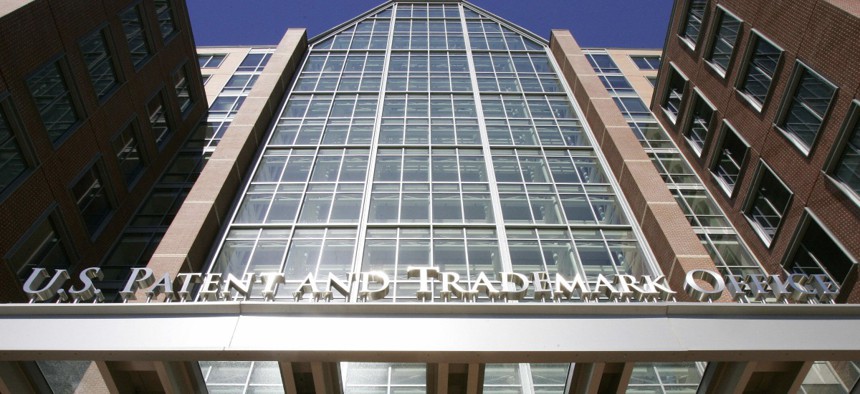USPTO Works to Modernize Patent Processing with AI

PAUL J.RICHARDS/AFP via Getty Images
The U.S. Patent and Trademark Office widened its developer talent pool with open source coding challenges and an international presence.
Artificial intelligence algorithms will play a critical role in the U.S. Patent and Trademark Office’s intellectual property classification system, part of the agency’s plan to streamline patent processing.
As many other federal organizations look to integrate emerging technologies and AI in their daily operations, USPTO Chief Information Officer Jamie Holcombe emphasized that his agency will tailor new algorithms based on human feedback to improve the patent processing experience.
“Instead of searching in a large way, like Google, we create searches that are unique to each of the individual examiners,” Holcombe told Nextgov. “So actually, the AI is an augmentation of the examiner, not a replacement for an extension of the tools in his own head.”
AI is helping the agency categorize inventions, and their claims, in part by sifting data that could be relevant across as many as 250,000 categories. Holcombe said better data ultimately leads to better AI, and added that cleaning up “dirty data” is important to optimize AI. Humans remain in the loop as well.
“There is definitely a human check,” Holcomb said.
One of the ways the agency is going to make progress in AI is through public engagement. One program, called the Artificial Intelligence/Emerging Technology Partnership, or AI/ET, Partnership, is a venue for stakeholder engagement at the intersection of intellectual property and emerging technologies. It consists of analysis and discussion around the agency’s policies regarding AI.
USPTO officials have also taken the popular route of crowdsourcing the code partially through an open source challenge hosted on Kaggle, a code development platform. Through outreach efforts between the USPTO and academic institutions as well as the agency’s own trademark regional centers, officials offered $25,000 in prize incentives to develop search phase algorithms.
Holcombe is particularly fond of this expansive approach, which allows outside coders an avenue to assist the agency improve its algorithmic outlook. Part of the coding task is incorporating existing patents into the algorithms to match with newer patent abstracts, improve past classification and help data scientists get more accurate searches.
“It's a way to crowdsource code solutions to common problems,” he said. “We're up to like…over 2,000 competitors, which is awesome. Anybody can [compete] around the world.”
Consistent with a broader federal initiative to enter into more international agreements in emerging tech development and regulation, Holcombe will be traveling to the United Kingdom and Spain.
“A lot of people don't think of ideas and innovations the way Americans do, and we have to create those treaties and enforce those ideas,” he said. “Making sure that people around the world can get credit for the ideas that they have and that it's not stolen by others.”
Past automated patent application classification, Holcombe said that the USPTO is also working on piloting new technologies that can further modernize business processes that are still manual in the agency.
Editor's note: This story was updated to reflect a more accurate description of the AI program being used by USPTO.



